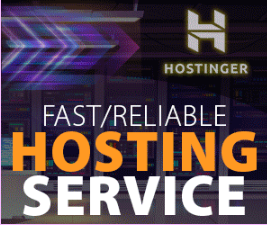Table of Contents
ToggleIntroduction
Launching a cloud kitchen can be exciting, but there are several pitfalls that new entrepreneurs must avoid to ensure long-term success. From overestimating demand to mismanaging marketing strategies, these mistakes can impact your profitability and operations. In this guide, we’ll cover the top 5 mistakes to avoid and offer actionable tips to help you start strong and grow your cloud kitchen business.
1. Poor Market Research and Lack of a Target Audience
Launching a cloud kitchen without understanding market demand or identifying a specific audience is a recipe for failure. Many entrepreneurs dive into the food business assuming that any menu will attract customers. However, without market research, you risk offering dishes that don’t align with local tastes.
How to Avoid This Mistake:
- Conduct Market Research: Analyze food trends and preferences in your target area.
- Define Your Target Audience: Cater your menu to a specific group—such as students, working professionals, or families.
- Study Competitors: Identify gaps in the market to differentiate your brand and stand out.
2. Underestimating Operational Costs and Cash Flow Management
One of the most common mistakes is underestimating startup and operational costs. Beyond the initial setup, recurring costs like rent, utilities, salaries, and delivery platform commissions can quickly eat into your budget. Poor cash flow management can lead to interruptions in your operations or even force the business to close.
How to Avoid This Mistake:
- Create a Detailed Budget Plan: Include both one-time setup costs and monthly expenses.
- Monitor Cash Flow: Use POS systems to track revenue and expenditure.
- Set Aside Reserves: Keep a financial buffer for unexpected costs like equipment repairs or supply shortages.
3. Neglecting Marketing and Online Presence
Assuming that listing your cloud kitchen on delivery platforms is enough to generate orders is a major pitfall. In today’s competitive food delivery market, building an online presence and promoting your brand is essential.
How to Avoid This Mistake:
- Develop a Website: Include online ordering options to encourage direct orders and reduce delivery commissions.
- Use Social Media Marketing: Engage with customers through Instagram, Facebook, and TikTok to promote your food and share offers.
- Collaborate with Influencers: Partner with local food bloggers or influencers to increase your brand visibility.
4. Offering an Overcomplicated Menu
An overcomplicated menu can slow down your kitchen operations, lead to inventory management issues, and increase waste. A large menu also makes it harder to maintain food quality and consistency across all dishes.
How to Avoid This Mistake:
- Start with a Simple Menu: Focus on core dishes that are easy to prepare and travel well.
- Use Overlapping Ingredients: Create a menu that uses similar ingredients to minimize waste.
- Adjust Based on Customer Feedback: Monitor what sells well and tweak the menu over time to meet demand.
5. Ignoring Customer Experience and Feedback
In a cloud kitchen, where you lack in-person interaction with customers, delivering a great experience becomes even more critical. Ignoring customer feedback can lead to negative reviews and lost business.
How to Avoid This Mistake:
- Monitor Reviews and Ratings: Regularly check feedback on delivery apps and social media.
- Respond to Complaints Quickly: Offer compensation or discounts to address any issues.
- Provide Order Tracking and Communication: Keep customers updated on their order status to enhance their delivery experience.
Conclusion
Launching a cloud kitchen comes with unique challenges that require careful planning and execution. Avoiding these common mistakes—such as poor market research, underestimating costs, neglecting marketing, overcomplicating your menu, and ignoring customer feedback—can greatly improve your chances of success. Focus on market alignment, budgeting, and customer experience to ensure your cloud kitchen thrives in 2025.



